Many systemic pathologies can be caused by a significant decrease in quality of life, loss of total performance and even severe disability.Muscle -related diseases are not only in old age.Every 2-3 cases are observed in patients of working age.Arthrosis is the most dangerous and poorly used for correction.
This degenerative disease is accompanied by the thinning of the cartilage in the large and small joints, leading to the reduction of the amplitude of the movements and the pain relief of the pain.As a result of severe treatment, the appointment of the disease at a very early stage can only be prevented as a result of severe treatment.In this article, we learn about the causes of development, pathogenesis, clinical manifestations, modern methods of diagnosis and treatment of arthrosis.
The joint prevalence
Taking into account statistical indicators, arthrosis is a very relevant disease and the frequency of occurrence is increased every year.According to the World Health Organization, pathology can be observed at seven percent of the planet's population.This is primarily the frequency of detection compared to other disorders of the muscle bone system.
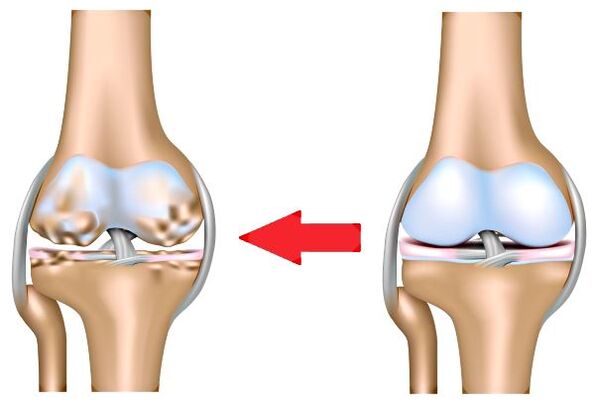
Arthrosis is a chronic disease of the joints of non -inflammatory etiology that leads to deformations in the affected areas
Cartilage degeneration is often observed in young people, more often found in men.Young girls often detect inter -wall arthrosis.After reaching the age of fifty, the frequency of lesion and the localization of the focus are roughly the same for both genders and about 60%.
Based on the data presented, it can be understood that it is extremely important to identify the most effective medication at an early stage at an early stage.Otherwise, treatment of triggered arthrosis is inaccessible to most elderly patients in connection with the financial element.
Causes and risk factors of joint development
The incidence of the presented joint disease has led to the fact that the problem is acute in the medical circle of developed countries.Leading clinics spend hundreds of millions of dollars a year on the study of arthrosis.A gradual study of the problem made it possible to increase the pathogenesis of the process and the likelihood of the disease.
The modern and complete classification of joint degeneration is shown below, and at this stage it is sufficient to understand that primary and secondary forms can be distinguished.
The following can lead to the development of secondary joint disease:
- Congenital changes related to the blood supply of joint joints;
- injury to cartilage, league or bone growth zones;
- Metabolic violations, especially with a mineral connection;
- autoimmune pathologies;
- bone tissue -affecting infections;
- Hemorrhage.
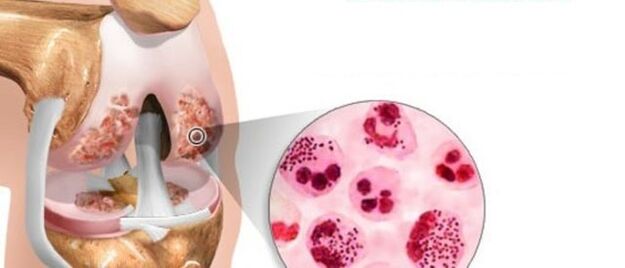
Primary arthrosis can be an independent disease, as a result of the influence of such provoking factors:
- Senile age;
- presence of excess body weight;
- excessive physical activity;
- Surgical interventions in the joint;
- genetic predisposition;
- not sufficient calcium and other mineral intake;
- chronic intoxication;
- long and frequent stay at low temperatures;
- Frequent injury to the bone joint.
The mechanism of joint development
The normal bone joint consists of two or more heads of the joint, a ligama, cartilage and synovial fluid.All of these structures provide mobility in a certain area of the muscle bone system without pain, allowing the burden on walking and jumping, scattered without causing the body to damage the body.
The arthrosis of the joints belongs to a group of polyetiological diseases.This means that the effect of development is most often the effect of the whole complex of triggers, including professional damage, overweight, elderly and malnutrition.Pathogenesis is that some influences lead to a significant deterioration of blood supply and lymphatic flow from the given area.
In addition, chondrocites lose the ability to rapid regeneration and normal amounts of intraarticular fluid, which reduces the friction of the surfaces during movement.Gradually, the cartilage becomes rough and will start washing during the pressure during active exercise.
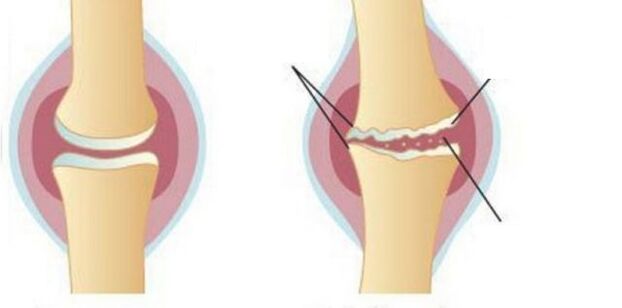
Gradually, the compensation capabilities of the tissues are exhausted and gradually wipes a layer of chondrocytes.When degeneration reaches the bones, pronounced pain develops and mobility is significantly reduced.Without proper treatment, the patient can completely lose the ability of active movements and even maintain their needs independently.
Joint symptoms
The person cannot know what arthrosis is, the disease gradually begins and does not appear in the initial stages.Over time, the patient notes the appearance of mild pain without a certain localization, which increases in the background of significant physical effort.Increasing degeneration leads to the fact that pains appear with less movements and get a clean space.
The less noticeable symptoms of developing arthrosis are as follows:
- "Painful" pain in weather;
- Crunch when moving;
- stiffness in the morning;
- Muscle cramps.
There are signs with the deep lesion of the cartilage that indicate local inflammation, such as swelling, redness and temperature.If a person does not ask for help from the doctor, the symptoms progress and appear not only in the background of physical exercises but also in rest.
The thinning of a layer of chondrocytes leads to deformation of the joints and to violation of the normal functioning of the limb.When you feel the abnormal focus, the patient notes the points of the greatest pain.In addition, the cartilage's lips are significantly thickened along the edge, indicating compensating hypertrophy.
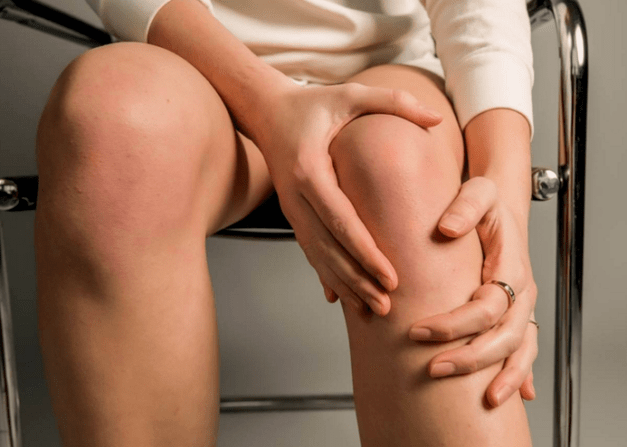
Pain
In the field of bone joints, many infringements cause some difficulties in the process of differential diagnosis.However, after evaluating the nature of the pain, arthrosis can be distinguished from the arthritis of the other etiology.In the described state, painful feelings usually occur when they try to perform active movements.Its intensity gradually increases as you try to increase the load on the damaged joint.
The described clinical image corresponds to the first phase of the process.In the second and third stages of progression, the pains appear even in a state of rest, but can only be stopped by being in a comfortable position for the limb.The difference between arthritis is the presence of constant pain, which does not disappear when the situation changes and increases at night.
To chew on the joint
The destruction of the natural structure of the cartilage causes active proliferation of chondroblasts, but all the polypotent cells of our body have a certain distribution limit.This phenomenon is called a compensatory buffer.This means that after a certain amount of mitotic division, the cell dies and is no longer able to reproduce its own breed.
After a while, this in the normal form of the joint gap causes the appearance of the so -called "Christ" or a change in the outgrowth of the lumen and the recesses.This phenomenon only exacerbates the process as the spikes formed during the destruction process cause additional damage during movement.
Due to the smoothness of the joint surface, the changes in tubercity and the appearance of irregularities, the amplitude of active and passive movements is significantly reduced.This is the symptom that most often causes the patient to seek medical help.Unfortunately, at this stage, drug treatment efficiency is too low, only surgical joint correction can improve the situation.
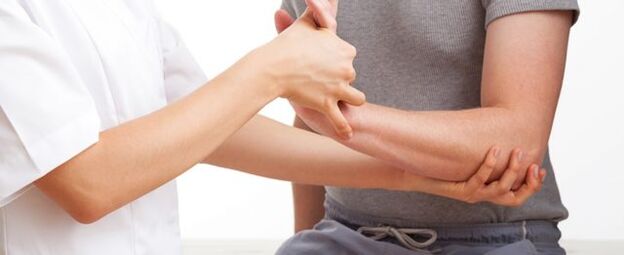
Functions included:
- The likelihood of the "contracture" of active and passive movements or complete disappearance in the limb;
- The kit is observed during the day, not only in the morning, as with arthritis;
- In some cases, the limb must be faded manually to be in a more comfortable position.
Sounds in the joint
Many have heard a distinctive "crunchy" sound when kneading the joints.There is a theory that this phenomenon is observed in a healthy person, when the density of synovial fluid in the capsule capsule of the bone joint changes drastically, and the gas bubbles it contains, which are rapidly expanded and exploded, so the spectacle of the bark.This phenomenon is not dangerous, but in the case of arthrosis a similar sound appears as a result of other processes.
The cartilage of Crysta has been formed during the cartilage of the joint and joint lip and leads to the formation of cracks and the renovation of the league.Even an inexperienced person can distinguish the joint sound in the joint joint - coarse and "dry".The severity and volume of the symptom described are directly proportional to the stage of the disease.
The features of the sounds in the joint joint are arthrosis:
- Their presence is only in the astonishing joint;
- Always accompanied by the deterioration of mobility;
- Expensity progresses in later stages of the disease.

To change the appearance of the joint
In the initial stages of the formation of arthrosis, the process does not lead to the form of bone joints.A noticeable change can only be observed with a neglected disease if one part of the joint is completely erased and the other produces cartoons.As a result, the pathological area increases significantly and loses its natural form.The given symptom is extremely unfavorable because the presence of deformation in the region, such as the knee or hip joint, always leads to a change in the lower structures, as the displacement of the load axis is shifted.
Types and sections of joint types and sections
Modern classification of arthrosis is quite branched, thanks to a huge list of possible localization of pathological focus.
The most important is the most important thing to comfort and treat the disease for the convenience of communication between medical centers and even countries:
- The hands are joint;
- cervical;
- ankle;
- knee;
- Polyarthrosis;
- hip;
- spine.
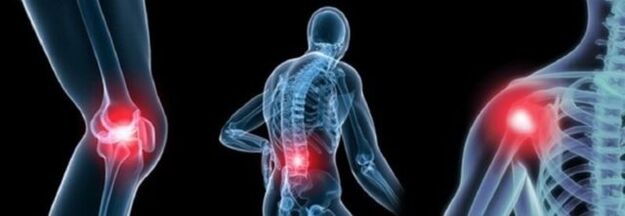
When creating a diagnosis, a very important phase is precisely the precise determination of the stage of the devastating process.Stages of formation of arthrosis can be distinguished:
Stage 1 - There is no fully visible change in the shape of the joint, disturbances are observed in the biochemical composition of the intra -articular fluid, with insignificant pain syndrome complemented by inflammatory manifestations of the joint.
Stage 2 - Degenerative procedure in the cartilage tissue is observed, "Christ" forms, stiffness and significant pain syndrome are combined during movements.Discsirophy of the surrounding joints of the muscles develops.
Section 3 - We determine the presence of extensive focus of cartilage, changes the shape of the joint, and the amplitude of active and passive movements in the limbs or completely absent.At this stage, contractures often develop in patients, which completely stop the movements in the affected area.
Complication
The process of uncontrolled destruction can lead to serious complications, which, while reducing the quality of life, can lead to complete nonsense to take care of themselves alone.
The hardest:
- complete destruction of the cartilage tissue;
- contracture;
- appearance of hernial protrusions in the area of intervertebral discs;
- severe disability of the patient;
- Significant deformation of the limb.
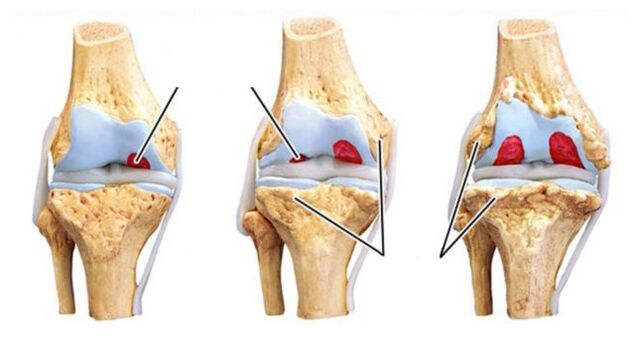
Treatment of joint treatment
Unfortunately, many patients, unfortunately, get to know what arthrosis is and how to treat it in stages where a significant effect is no longer possible to achieve a significant effect.The first symptoms and the lifelong muscle -bone system should be involved.This is due to the fact that the effects that contribute to the development of the disease can be rarely prevented.For example, blood supply and age -related changes in the joints use the constant use of vascular drugs.Because of the pathogenesis, therapy should be complex and comprehensive.First, after the appearance of discomfort, read a rheumatological profile or traumatologist.A physician based on laboratory and instrumental diagnostics will make an accurate diagnosis and solve the issue of prescribing the right treatment.
Medication
In the early stages of arthrosis, medicines can improve the situation.Such drugs are used for this purpose:
- Hormones of adrenal cortex;
- non -steroid anti -inflammatory drugs;
- Preparations with chondroprotective effects.
Complex influence allows the patient to save the patient from pain, compensation for the inflammatory process, and normal blood supply as soon as possible.

The latest therapy
Advanced developments in drug treatment have led to the creation of new drugs that essentially replace natural synovial fluid.Advanced molecules can significantly reduce the process of cartilage degeneration, reduce pain and save the patient from inflammatory phenomena.Artificial synovial fluid is introduced directly into the common bag every week.One treatment duration is 3-5 weeks.Usually the result is sufficient for a person's normal life for 6-12 months.Patients claim that comfort and quality of life improve significantly.Unfortunately, this tactic only applies to people with arthrosis.
Surgery
Due to severe joint joints, such as severe damage to the hips or knees, at a relatively young age, up to 60 years, patients offer complete replacement of the joint.Nowadays, ceramic and titanium transplantation are used that can completely restore lost functions.These devices are strong enough and are able to provide the patient up to 20 years of life without problems with the mobility of replaced joints.

Folk recipes
Non -conventional drugs are widely used in the treatment of arthrosis.This is due to the fact that after stopping the acute process, a lifelong therapy is required to restore and maintain the natural structure of the cartilage.To achieve goals, the products used must be safe and as natural as possible.
Compression and creams with the following plants are very popular:
- ginger root;
- cinnamon;
- Kalanchoe;
- curcuma;
- celery.
Diet with arthrosis
In the treatment of the pathology presented, it is extremely important to ensure the body's constant nutrient intake.This can only be achieved if adherence to proteins, fats, carbohydrates, vitamins and trace elements in the diet for proteins and fats.You need to ask the nutritionist to compile the most appropriate circuit.Fast carbohydrates and alcohol should be removed from the diet.The table should be based on fish, red meat and fresh fruits.
It is very important to follow the following nutritional rules for arthrosis:
- balance;
- 5-6 times a day in small portions;
- Don't eat after 19:00;
- Get rid of excess body weight.
Prevention
Due to the polyetiological condition, joint prevention is not specific these days.
By observing general recommendations, you can warn the disease:
- proper nutrition;
- Moderate physical activity 2-3 times a week;
- Normalization of body weight;
- frequent fractionated nutrition;
- Adherence to personal hygiene rules;
- Denying bad habits.
Conclusion
The pathological condition of the muscle bone system is often observed in older patients.The frequency of early diagnosis of the disease should be increased as it is only in this case that can be expected to succeed in conservative treatment.The prognosis for working capacity, which is favorable with the early identification and adherence to all the doctor's recipes.The presence of arthrosis of the third stage is accompanied by unfavorable prognosis and can lead to the patient's complete nonsense.
Nevertheless, the most severe form of the disease is also adjusted with the help of surgical treatment, with disadvantages:
- surgery trauma;
- high cost;
- long rehabilitation period;
- It is not applicable to patients under 60 years of age.

















































